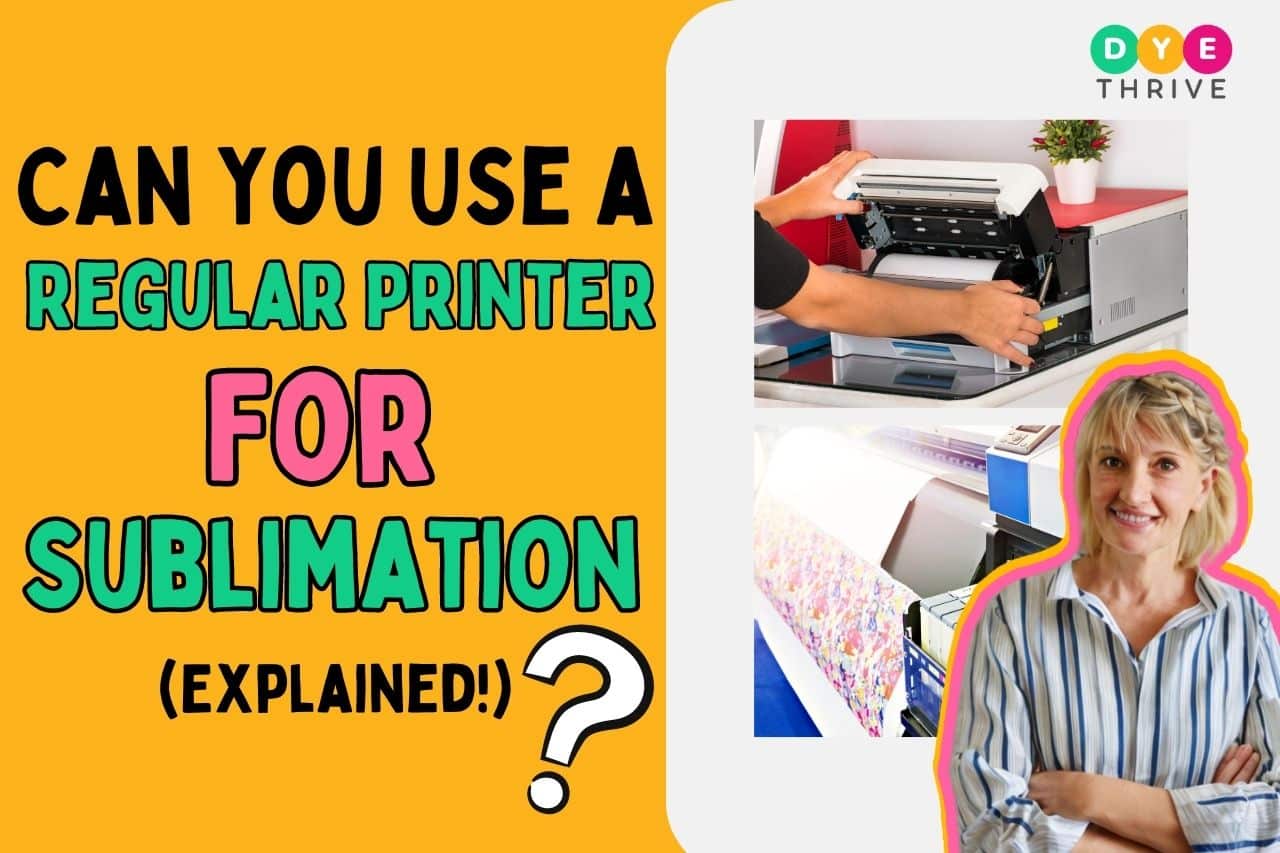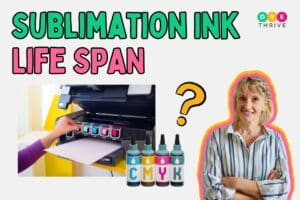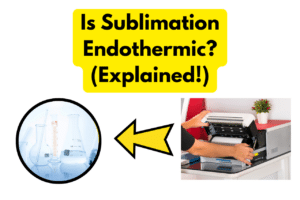Sublimation printing is a popular printing technique used to print on fabrics, mugs, phone cases and other polymer-coated substrates.
But can you use a regular printer for sublimation printing?
The short answer is yes, you can convert some standard inkjet printers to be used for sublimation printing with some modifications.
But you need to be cautious otherwise you will end up damaging your printer!
In this guide, we’ll look at:
- Can You Use Sublimation Ink in a Regular Printer?
- Can you use sublimation ink and paper in a normal printer
- Pros and cons of using a regular printer for sublimation
- Converting a standard inkjet printer for sublimation printing
- Top printers you can modify for sublimation
Let’s dive in!
Can You Use Sublimation Ink in a Regular Printer?
No, you cannot use sublimation ink in a regular printer. Let me explain why.
Sublimation ink requires a printer with a piezo print head designed for dye-sublimation printing, such as certain Epson EcoTank models.
Using sublimation ink in a standard inkjet printer with a thermal print head can damage the print head and cause clogs. The ink formulation is thicker and more abrasive than regular inkjet inks.
For successful sublimation printing, you need a suitable piezo inkjet printer along with sublimation ink, paper and heat press.
Popular Epson models like ET-2803, ET-2760, and ET-15000 can be converted for sublimation printing by flushing the original inks and refilling them with sublimation inks.
But other brands using thermal print heads cannot be used reliably with sublimation inks.
So in short if your printer is having thermal print head you should not use it for sublimation purposes however you can easily do sublimation printing if your printer is having a piezo print head.
Can You Use Sublimation Paper in a Regular Printer?
You should not use sublimation paper in a standard printer.
The reason printers specify recommended paper types is that different papers have different properties and react differently. Sublimation paper in particular is designed to work very differently from normal printer paper.
With regular printer paper, it is the ink that does most of the work. The paper acts as a substrate to absorb the ink.
With sublimation paper, it is the special coating on the paper that enables the print process. Sublimation ink turns into a gas that gets embedded into the coated paper when heat is applied. This allows it to create a permanent, highly detailed print.
The issue is that many standard printers simply don’t have print heads or cartridges that are compatible with sublimation inks and papers. Their components are designed for regular ink and paper. The sublimation process requires very specialized materials.
In short, you shouldn’t use sublimation paper in conventional printers. They lack the specific capabilities to properly print onto sublimation paper, resulting in issues like jamming, blurred output, and poor ink adhesion. For quality results, always print sublimation designs on dedicated dye-sublimation printers engineered to work with sublimation ink and media.
Pros and Cons of Sublimating with a Regular Printer
Converting a standard inkjet printer for sublimation offers some benefits but also has some drawbacks to consider.
Benefits and drawbacks of using a regular printer for sublimation
Pros:
- Lower startup cost – Converting an existing printer is cheaper than a commercial sublimation printer
- Wide format options – Some standard printers offer larger print sizes than dedicated sublimation models
- Ink cost savings – Sublimation ink for conversion can cost less than packaged cartridges
Cons:
- Voided printer warranty – Using inks other than what is recommended by the manufacturer can void your printer’s warranty
- Reduced print head lifespan – Sublimation inks are thick and decrease the lifespan of your printer head
- Trial and error – Getting good print quality may require considerable testing and adjustments
- No vendor support – You won’t be able to get technical support for sublimation use from the manufacturer
For low-volume printing, converting an existing printer can be an affordable way to get started with sublimation. But be prepared to do your own troubleshooting and maintenance.
Can I Just Use Regular Ink On Sublimation Paper?
Using regular ink on sublimation paper will not work for sublimation printing.
Sublimation paper is designed to lock in the gas released from sublimation inks during the heat transfer process.
Since regular ink does not turn to gas, it will not properly adhere to sublimation paper and will likely smear or wipe off. The paper is engineered for sublimation ink.
Can I Use Sublimation Ink On Regular Paper?
You can try, but in real, printing with sublimation ink on normal copy paper is also problematic. Because regular paper is not made to be a carrier for sublimation ink, much of the ink can be lost during printing.
This leads to blurry, smeared prints that cannot be properly transferred for sublimation.
The sublimation process requires both sublimation-compatible ink and paper to work effectively.
For quality results, sublimation ink should be used with sublimation paper, and both should be paired with a suitable dye-sublimation printer and heat press. Using the wrong combination of ink and paper will provide poor print quality.
can I use sublimation ink for regular printing
No, it is not recommended to use sublimation ink for regular printer using your standard inkjet printers.
Sublimation ink is designed to infuse into specially coated papers or fabrics when heat and pressure are applied.
Using sublimation ink in a regular inkjet printer will likely result in poor print quality on normal papers. For regular printing needs, standard inkjet inks are best.
Using sublimation ink can also damage the printer by clogging the print nozzles.
The ink is formulated differently from standard inks and can leave residue inside the printhead.
Using the wrong type of ink may also void the printer’s warranty.
For these reasons, sublimation ink should only be used for its intended purpose with appropriate papers, fabrics, and heat press equipment.
Converting a Printer to Sublimation
Many people wonder – what does it mean to convert a printer to sublimation? Here’s a quick overview of the conversion process:
Converting an inkjet printer for sublimation involves 3 key steps:
- Flushing the original inks – The printer is thoroughly cleaned to remove all traces of standard ink
- Refilling with sublimation ink – Suitable sublimation ink is added to the empty cartridges
- Using Sublimation Paper – Load the sublimation paper into the printer.
- Printer profile and settings – Adjust the printer settings to the correct paper type and quality.
Let’s look at how to convert a popular Epson EcoTank printer for sublimation printing.
Top 3 Printers You Can Convert For Sublimation
Many Epson inkjet printer models can be converted to sublimation printing using third-party inks and some modifications.
Here are the top 3 choices:
1. Epson Ecotank ET-2800
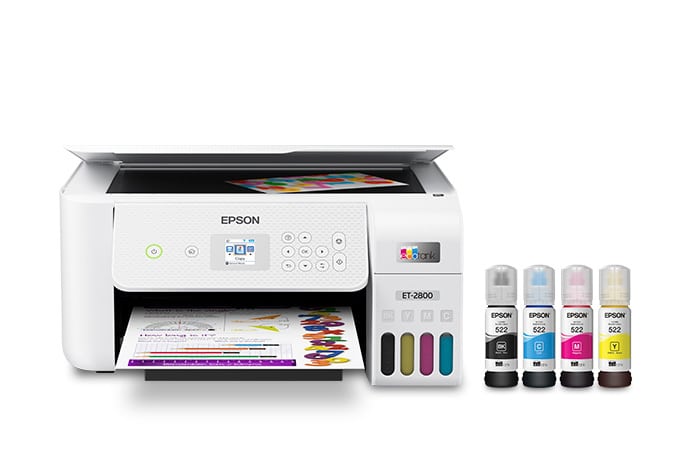
The Epson EcoTank ET-2800 is an excellent choice for converting to sublimation printing thanks to its versatile features and easy conversion process. Here’s a deeper look at why it stands out:
- The ET-2800 has an efficient ink tank system rather than cartridges, significantly reducing ink costs per print. This saves substantially on the higher cost sublimation inks after conversion.
- With a max resolution of 5760 x 1440 dpi, the ET-2800 delivers exceptionally sharp and vivid output. This high print quality is ideal for producing clean, detailed sublimation transfers.
- Its fast print speeds of up to 15ppm black and 8ppm color boost productivity for high-volume sublimation printing.
- The ET-2800 works seamlessly with Windows, Mac, and Linux systems and has user-friendly print drivers and interface.
- With DIY videos and guides widely available, converting the EcoTank for sublimation with third-party inks is straightforward.
- The printable area of 8.5″ x 47″ accommodates larger items like iPad cases and t-shirts.
In summary, the ET-2800’s combination of high print quality, ink economy, media flexibility, print speed, and accessible conversion make it a standout choice as an affordable but capable sublimation printer.
2 .Epson Ecotank ET-2803
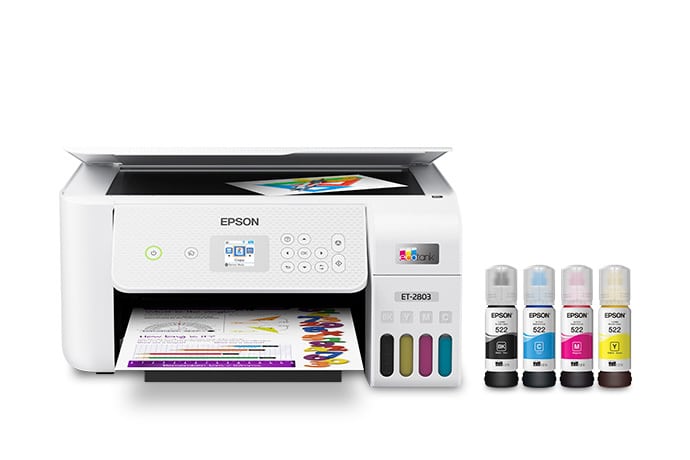
Here are some key reasons why the Epson Ecotank ET-2803 is an excellent choice for converting to sublimation printing:
- It utilizes Epson’s Micro Piezo heat-free print head technology which can handle sublimation inks better than thermal printheads. The piezo printheads are durable and clog-resistant.
- The ET-2803 has large refillable ink tanks that reduce ink costs significantly compared to cartridges. This helps make up for the higher costs of sublimation inks.
- It can print borderless 4R photos in as fast as 57 seconds, allowing high-productivity sublimation printing.
- The printer has a maximum resolution of 5760 x 1440 dpi for sharp, detailed sublimation transfers.
- It’s compact and affordable while still delivering excellent professional quality results when converted.
- Ample online resources provide guidance on successfully flushing and converting the ET-2803.
- There’s a large user community that shares tips on optimizing the printer for sublimation.
Overall, the ET-2803 brings together fast print speeds, low operating costs, great print quality and accessible conversion to sublimation, making it a very compelling option as an entry-level sublimation printer after modification.
3. Epson ET – 15000 – For printing large size (13”x19”)
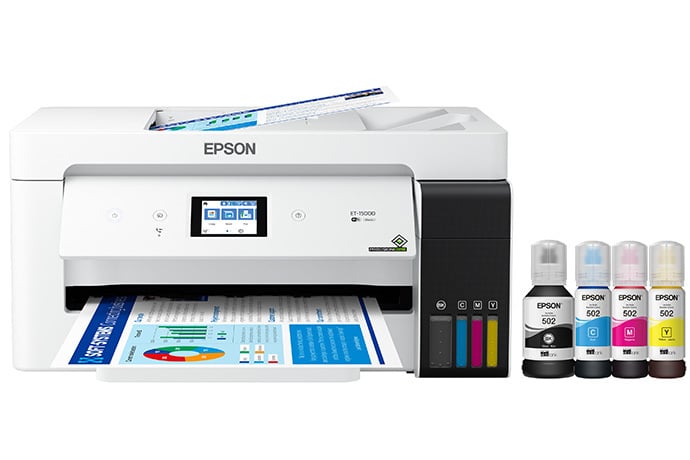
Here are some key reasons why the Epson ET-15000 is one of the best Epson printers to convert for sublimation printing:
- It uses Epson’s industrial-grade PrecisionCore MicroTFP printhead that can handle heavy use with sublimation inks.
- The ET-15000 supports large format 13″ x 19″ printing, allowing you to sublimate bigger items..
- It delivers professional quality results with a max resolution of 4800 x 1200 dpi.
- The high-capacity ink tanks keep ink costs low even when using more expensive sublimation inks.
- It prints at fast speeds up to 17 ISO ppm so you can quickly produce high volumes of sublimated products.
- The printer is designed for reliability and heavy-duty use in commercial settings.
- Dual tray inputs provide flexibility for printing on diverse sublimation blanks and transfer papers.
- While conversion requires some technical skill, online guides are available to walk through the process.
- It’s an economical alternative to more expensive wide-format commercial sublimation printers after conversion.
Alternatives to Converting a Regular Printer
Converting standard printers for sublimation offers an affordable DIY option. But there are a few other alternatives worth considering:
Getting a Dedicated Sublimation Printers
Purchasing a commercial sublimation printer like a Ricoh or Sawgrass Virtuoso provides optimal print quality and performance since they are designed specifically for sublimation printing.
The benefits include:
- Better ink adhesion and color accuracy
- Optimized print heads and feeding mechanisms
- Vendor support and easier troubleshooting
- Tend to have lower long-term operating costs
The downside is the higher initial purchase cost, but they deliver great results with minimal fuss.
Third-party printing services
Using an online or local sublimation printing service allows you to outsource production while you build up volume.
They handle the printers, inks, substrates, and color management profiles so you get quality results without the equipment investment. You simply provide the designs.
This allows you to test the market before eventually bringing production fully in-house in the future if volume warrants the investment.
FAQ – Can You Use a Regular Printer For Sublimation Printing?
Here are answers to some common questions about using standard printers for sublimation:
Can any printer do sublimation?
No, only specific inkjet printers having piezo print head can be used for sublimation printing. The printer requires sublimation inks, sublimation paper, proper page and color settings to deliver good results.
Can you sublimate with an inkjet printer?
Yes, certain inkjet printer models like Epson EcoTank and Canon PIXMA lines can be converted to sublimation printing by flushing original inks and refilling with suitable sublimation inks.
Do you need special ink for sublimation?
Yes, you need dye-sublimation ink designed specifically for the sublimation process. Standard inkjet inks will not work properly.
What happens if you use sublimation paper and a regular printer?
Using sublimation paper in a normal printer won’t damage it, but won’t produce good sublimation results without the specially formulated sublimation ink.
Conclusion
While it is possible to convert some inkjet printers for sublimation printing, you will get the best output from a commercial sublimation printer with optimized inks and design.
Converted standard printers can offer an affordable entry point, but expect to do some trial and error to get good results.
Alternatively, consider outsourcing your printing while starting out, and invest in proper sublimation equipment once you have the volume to justify it. This will save you the hassle of converting and maintaining consumer-grade hardware.
With the right techniques and supplies, you can produce high-quality full-color sublimated products for your customers.
Got any questions? comment down below, I would love to help you out.

